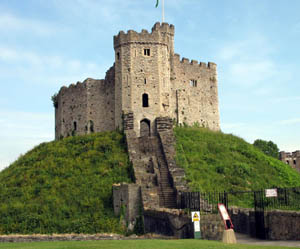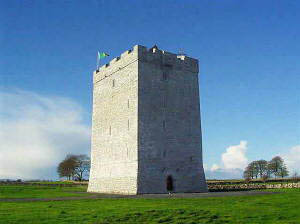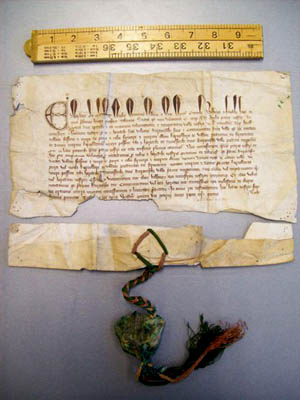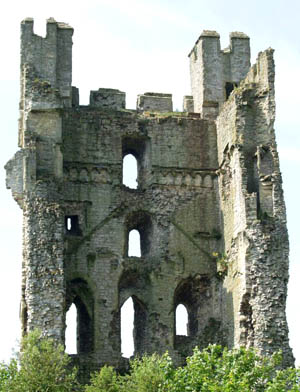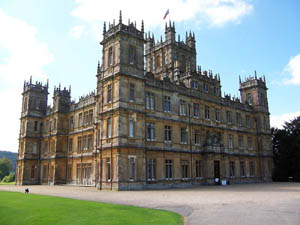Castles |
|
|
||||||||||||||||||||
|
The term castle has been applied to structures as diverse as ancient hill forts and Renaissance country houses. Over the millennium that castles were built, they took on a great many forms with many different features, but in the popular mind castles feature a range of elements including battlements, drawbridges and arrow slits. In its simplest terms, the definition of a castle accepted amongst academics is "a private fortified residence". This contrasts with earlier fortifications, such as Anglo Saxon burhs and walled cities such as Constantinople and Antioch in the Middle East; castles were not communal defences but were built and owned by the local feudal lords, either for themselves or for their monarch. Historians enjoy debating the scope of the word, but usually accept a castle to be the private fortified residence of a monarch or nobleman. This definition excludes fortresses, which were not homes, and also fortified towns, which were public defences rather than private residences. Taking a little licence we can extend the definition to buildings that might not technically qualify under this definition (for example those built for show rather than defence, those in which the nobleman rarely or never lived, and those built by military orders). The word castle is derived from the Latin word castellum which is a diminutive of the word castrum, meaning "fortified place". The Old English castel, French château, Spanish castillo, Italian castello, and a number of other words in other languages also derive from castellum. The word castle was introduced into English shortly before the Norman Conquest to denote this type of building, which was then new to England. Although these various terms derive from the same root, they are not universally applied to the same types of structures. For example, the French château is used to describe a grand country house at the heart of an estate, regardless of the presence of fortifications, and a castle is denoted by the term chateau fort. The term castle has been used to refer to structures such as Iron Age fortifications, for example Maiden Castle, Dorset. Many castles were originally built from earth and timber, but had their defences replaced later by stone. Early castles often exploited natural defences, and lacked features such as towers and arrow slits and relied on a central keep. Castles served a range of purposes, the most important of which were military, administrative, and domestic. During the First Crusade (1096–1099) Frankish armies encountered walled settlements and forts that they indiscriminately referred to as castles, but which would not be considered as such under the modern definition . In the late 12th and early 13th centuries, a scientific approach to castle defence emerged. This led to the proliferation of towers, with an emphasis on flanking fire. Castles were established by Norman invaders of England for both defensive purposes and to awe the country's inhabitants. As William the Conqueror advanced through England he fortified key positions to secure the land he had taken. Between 1066 and 1087 he established 36 castles to discourage rebellion. A castle could act as a stronghold and prison but was also a place where a lord could entertain his peers. Over time the aesthetics of the design became more important, as the castle's appearance and size began to reflect the prestige and power of its occupant. Comfortable homes were often fashioned within their fortified walls. Towards the end of the Middle Ages, castles tended to lose their military significance because of the advent of powerful cannons. Although castles still provided protection from low levels of violence in later periods, eventually they were succeeded by country houses as high status residences. Most castles as we know them are found in Europe and the Middle East and date from the Middle Ages. The word castle comes from the Latin castellum, denoting a type of fortified structure. A European innovation, castles originated in the 9th and 10th centuries, after the fall of the Carolingian Empire - its territory being divided among multiple lords and princes. Castles controlled the area immediately surrounding them, and were offensive as well as defensive structures: they provided a secure base from which raids could be launched as well as protection from enemies. Medieval warfare - including the Crusades - featured many more sieges of castles than open battles. Castle architecture evolved radically in step with evolving siege technology. Although their military origins are often emphasised, the structures also served as centres of administration and symbols of power. Urban castles controled bothl important travel routes and the local populace. Rural castles were often situated near to features that were integral to life, such as ponds, mills and fertile land. In some countries, before a castle could be built it was necessary to obtain the permission of the king through a licence to crenellate, or else the builder risked it being seized or slighted – deliberately damaged to such an extent that the castle was indefensible. This practice was not universal - in some countries the monarch had little control over lords, or required the construction of new castles to aid in securing the land so was unconcerned about granting permission, as was the case in England after 1066 and the Holy Land during the Crusades. In England licences to crenellate were granted not only by the Monarch but also other powerful rulers, notably the Prince Bishop of Durham, in his position as prince of the Palatinate of Durham; the Earl of Chester, in his position as ruler of the Palatinate of Cheshire and (after the formation of the Palatinate of Lancashire in 1351), the Duke of Lancaster. Switzerland (without a soveriegn monarch and a centralised state) is an extreme case of there being no state control over who built castles, and as a result there were 4,000 in the country. Before the 12th century, castles were as uncommon in Denmark as they had been in England before the Norman Conquest. Many new castles were polygonal or relied on concentric defence – several stages of defence within each other that could all function at the same time to maximise the castle's firepower. These changes in defence have been attributed to a mixture of castle technology from the Crusades and inspiration from earlier defences such as Roman forts. Not all the elements of castle architecture were military in nature, and even those that were often become decorative symbols of power - for example moats and machicolations. Some grand castles had long winding approaches intended dominate the landscape and impress visitors. Although gunpowder was introduced to Europe in the 14th century, it did not significantly affect castle building until the 15th century, when artillery became powerful enough to break through stone walls. While castles continued to be built well into the 16th century, new techniques to deal with improved cannon fire made them uncomfortable and undesirable places to live. As a result, true castles went into decline and were replaced by artillery forts with no role in civil administration, and by country houses that were generally indefensible. From the 18th century onwards, there was a renewed interest in castles with the construction of mock castles, part of a romantic revival of Gothic architecture, but they had no military purpose. For more information, follow one of the folling links |
|
||||||||||||||||||
|
|
||||||||||||||||||||
|
|
|||||||||||||||||||
|
|
|
|
||||||||||||||||||
|
|
||||||||||||||||||||
|
|
|||||||||
| :::: Link to us :::: Castle and Manor Houses Resources ::: © C&MH 2010-2014 ::: contact@castlesandmanorhouses.com ::: Advertising ::: |
